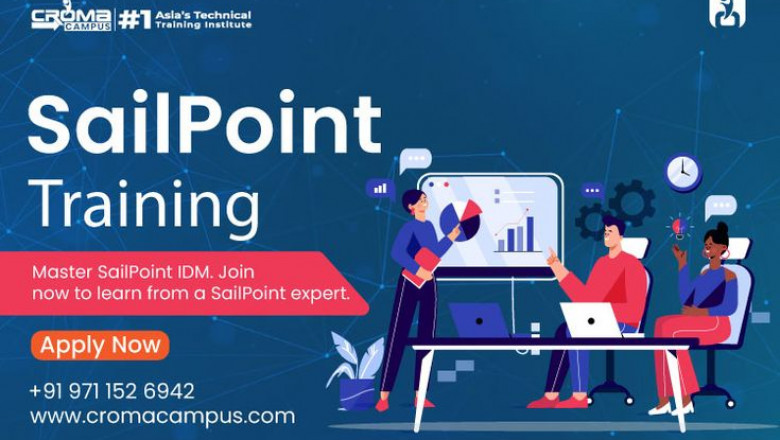views
An organization is made up of the people who give their contribution to make it successful. Well it is not easy for a single person to run the company. So everyone who is working in a company is interconnected. But in an organization, except for the full-time employees, there is a huge ecosystem of non-employee identities that include contractors, vendors, partners, consultants, bots, and even temporary staff. They play an important role in the daily operations. But as they are outsider, they also bring a sense of web security as well as compliance risks if they are not managed effectively. So there you may need Non-Employee Risk Management.
Here in this article, we will discuss in detail the concept of Non-Employee Risk Management in SailPoint. So if you are thinking of becoming a SailPoint developer, then consider enrolling in the SailPoint training in Noida. Because in places such as Noida, Delhi, these kinds of courses are in trend. Then let’s begin understanding non-employee risk management in SailPoint:
Non-Employee Risk Management in Sailpoint
SailPoint’s identity Security cloud platform offers a complete set of features and functionalities that can be used to build the Non-employee risk management framework. So if you have taken SailPoint Online Training, then you may be able to understand how you will be able to manage them with SailPoint:
1. Centralized Identity Management
Unified Identity Repository: SailPoint serves as a central system that stores information about all users, including employees and external partners. This gives organizations a clear view of who has access to what, across all applications and systems.
Consistent Policies and Controls: Companies can set and enforce the same access rules for everyone, including contractors or temporary workers, ensuring they follow the same security standards as full-time employees.
2. Easier Onboarding and Offboarding
Automated Access Management: SailPoint automates the process of giving and removing access based on a person's role, responsibilities, and time with the company. This helps avoid errors, delays, and ensures access is revoked promptly when someone leaves or finishes their contract.
Lifecycle Management: SailPoint helps track non-employee accounts by setting rules, such as reminders for access reviews and automatically deactivating accounts when a contract ends.
3. Detailed Access Control and Minimizing Privileges
Role-Based Access Control (RBAC): SailPoint helps organizations assign only the necessary access to non-employees, ensuring they can do their job without exposing the system to unnecessary risks.
Attribute-Based Access Control (ABAC): SailPoint also supports more flexible access control based on a user's role, the sensitivity of the resource, or even the time of day, giving companies more control over who can access what, and when.
4. Ongoing Access Reviews and Certifications
Regular Access Reviews: SailPoint allows businesses to schedule regular checks on the access of non-employees. Managers can review whether the access granted is still needed and appropriate.
Risk-Based Reviews: SailPoint's system can prioritize access reviews based on risk levels, making sure higher-risk accounts are reviewed more carefully.
5. Improved Visibility and Tracking
Detailed Audit Logs: SailPoint keeps detailed records of all identity-related actions, such as access requests, approvals, and changes to accounts. These logs are essential for compliance and investigating any security incidents, whether they involve employees or non-employees.
Reporting and Analytics: SailPoint provides powerful reporting tools that help organizations understand non-employee access patterns, spot potential security risks, and ensure compliance with both internal policies and external regulations.
6. Integration with Other Systems
Connector Framework: SailPoint’s system can easily connect with HR platforms, vendor management systems (VMS), and other tools that manage non-employee data. This ensures that identity information is always up-to-date and accurate.
API-Driven Integration: SailPoint offers APIs that allow organizations to create custom connections with other security and business applications. This makes it easier to manage non-employee access and improve overall security strategies.
Apart from this, if you have gained SailPoint Certification, it adds a credential to your portfolio. Also, you can showcase this to your potential employer to prove your skills and expertise. This certification can help you to successfully implement NERM with SailPoint.
Conclusion
From the above discussion, it can be said that non-employee risk management is no longer an option but has become an important part of the security strategy. Sailpoint provides a powerful platform with all the necessary features and functionalities to secure the growing world of non-employee identities within an organization. By using SailPoint’s centralized governance, automation features, detailed access controls, and strong audit capabilities, organizations can greatly reduce the risks related to their extended workforce. This ensures better data security, regulatory compliance, and smoother operations. Adopting a proactive and all-encompassing approach to Non-Employee Risk Management (NERM) with SailPoint is key to handling the challenges of today’s business world and building a secure and strong organization.














Comments
0 comment